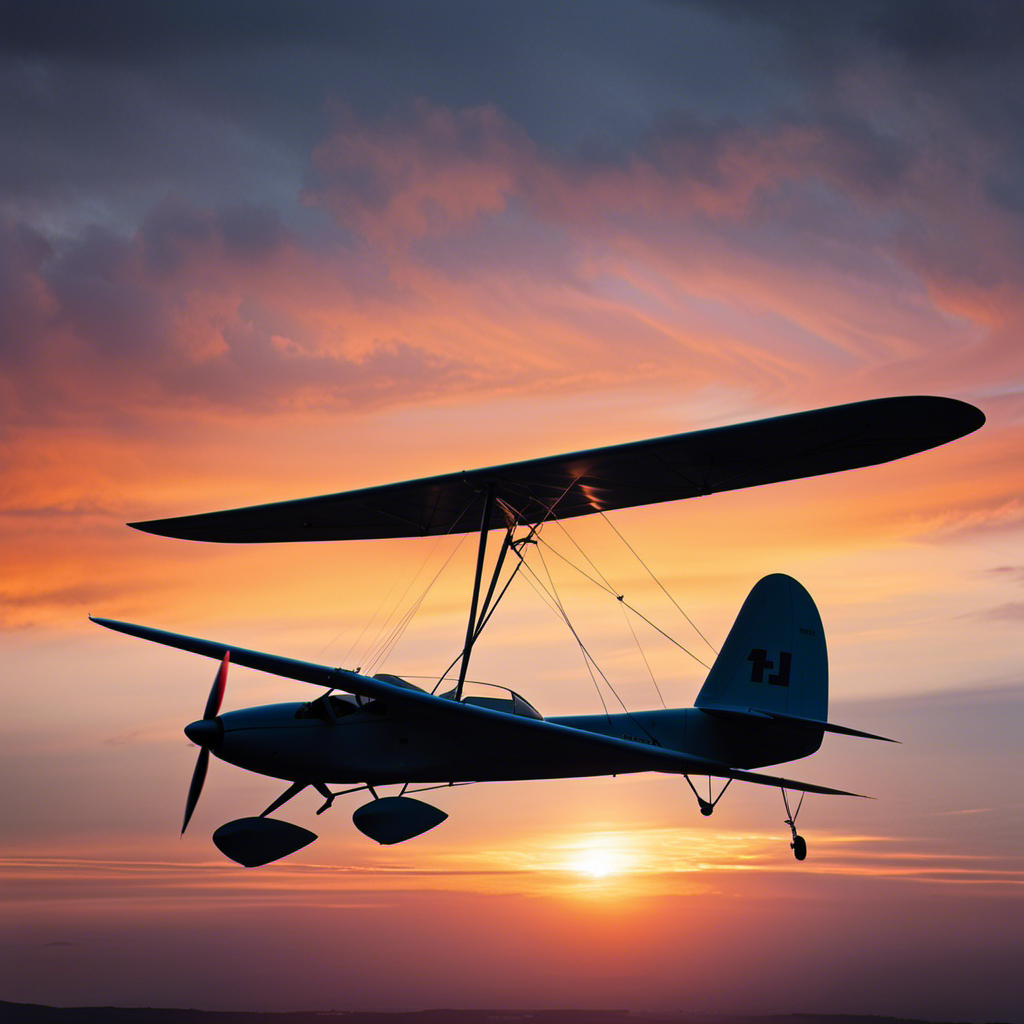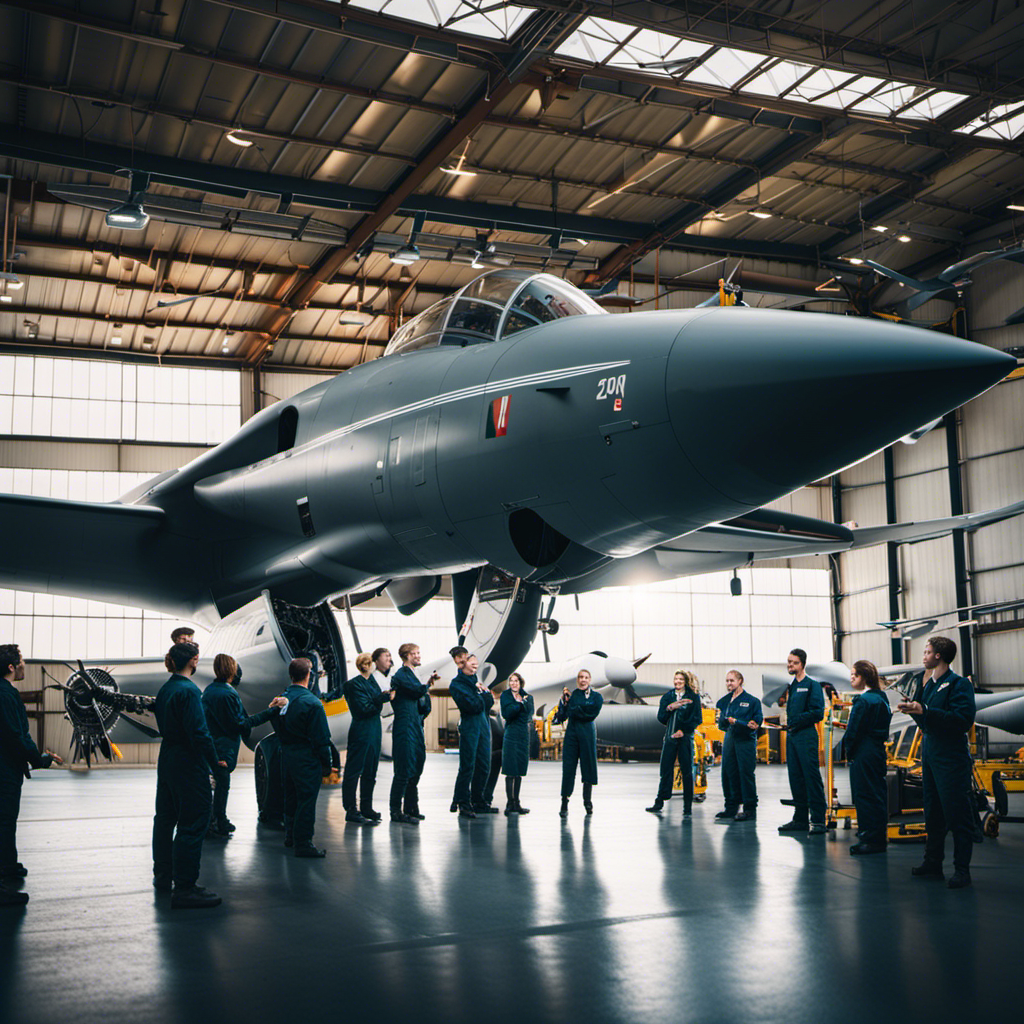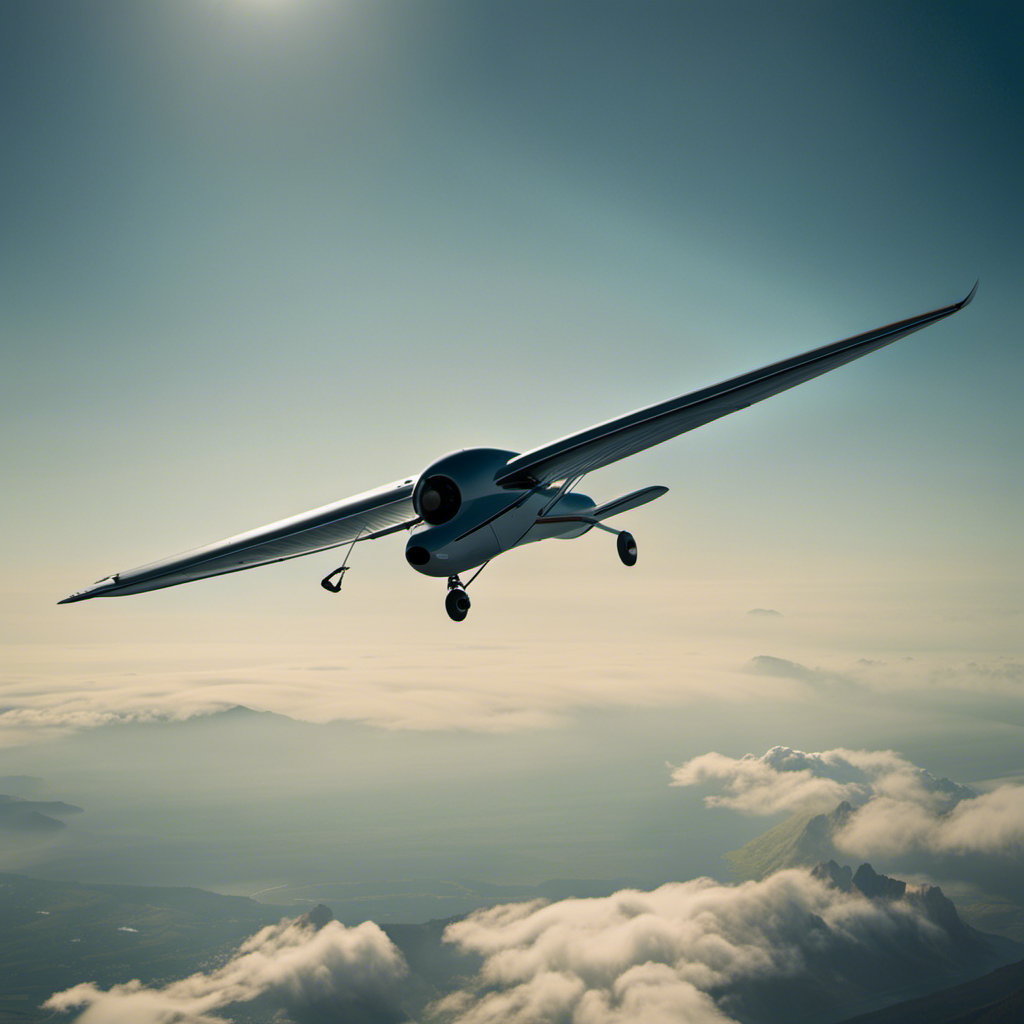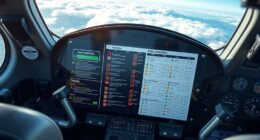I am thrilled to talk to you about the process of obtaining a license for piloting a glider.
Did you know that there are over 10,000 glider pilots in the United States alone? If you’ve ever dreamt of soaring through the skies and experiencing the freedom of flight, this article is for you.
I’ll guide you through the requirements, training, and exams necessary to become a licensed glider pilot.
So buckle up and get ready to embark on an incredible journey towards achieving your sky pass!
Key Takeaways
- The glider pilot exam consists of tasks and maneuvers, including emergency landing, navigation, aerobatics, and emergency procedures.
- The exam assesses the ability to handle the glider in various flight scenarios and evaluates knowledge of aviation regulations, navigation, and communication skills.
- To succeed in the exam, it is important to stay calm, focused, and follow the examiner’s instructions, while applying learned techniques and procedures.
- Obtaining a glider pilot license is a significant accomplishment that requires hard work and dedication, and it opens up opportunities for further aviation pursuits.
Research the Requirements and Eligibility
Before you begin the process of obtaining a glider pilot licence, it’s important to research the requirements and eligibility.
To become a glider pilot, you must be at least 16 years old and have a valid medical certificate. Additionally, you will need to complete a certain number of flight hours and pass both written and practical exams.
It’s crucial to understand these requirements before embarking on your journey to becoming a licensed glider pilot. Researching the eligibility criteria will help you determine if you meet the necessary qualifications and if pursuing a glider pilot licence is the right path for you.
Once you have familiarized yourself with the requirements, you can move on to finding a reputable glider flight school to start your training.
Find a Reputable Glider Flight School
When looking for a reputable glider flight school, you should start by researching online reviews and asking for recommendations from experienced pilots. It’s important to find a school that has a good reputation and a track record of producing successful pilots. To help you in your search, here is a table outlining some key factors to consider when choosing a glider flight school:
| Factor | Importance | Description |
|---|---|---|
| Location | High | Choose a school that is conveniently located for you. |
| Instructor Experience | High | Look for instructors with extensive experience in glider flying. |
| Fleet Size | Medium | A larger fleet means more availability of aircraft for training. |
| Safety Record | High | Ensure that the school has a strong safety record. |
| Cost | Medium | Consider the cost of training and any additional fees. |
Once you have found a reputable glider flight school, the next step is to complete ground school training.
Complete Ground School Training
Once you’ve chosen a reputable glider flight school, the next step is to complete ground school training. This is where you’ll gain the foundational knowledge necessary to become a successful glider pilot. During ground school, you’ll cover a variety of topics that will prepare you for the practical aspects of flying.
Here are some key areas that will be covered:
- Aerodynamics: Understanding the principles of flight and how gliders stay aloft.
- Navigation: Learning how to read maps, use navigation instruments, and plan cross-country flights.
- Meteorology: Studying weather patterns and how they affect glider operations.
- Regulations: Familiarizing yourself with the rules and regulations that govern glider flying.
Completing ground school training is essential for building a solid understanding of glider operations and ensuring your safety in the skies. Once you’ve completed this training, the next step is to obtain a medical certificate, which is necessary to ensure you are physically fit to fly.
Obtain a Medical Certificate
It’s important to obtain a medical certificate to ensure you’re physically fit to fly.
Before beginning my glider pilot training, I had to undergo a thorough medical examination to ensure that I was in good health and capable of handling the physical demands of flying.
The medical certificate is issued by an aviation medical examiner and includes a detailed assessment of my overall health, vision, hearing, and cardiovascular fitness.
This examination ensures that I am not at risk of any medical conditions that could compromise my safety or the safety of others while flying.
Once I received my medical certificate, I was ready to begin flight training and put my physical fitness to the test in the skies.
Begin Flight Training
I’m excited to start my flight training and put my skills to the test in the skies. As a glider pilot, I’ll learn the ins and outs of flying without an engine, relying solely on the forces of nature.
The training will begin with ground instruction, where I’ll learn about the different parts of the glider and the basics of aerodynamics. Once I have a good understanding of the theory, it’s time to take to the air. I’ll start with simple maneuvers, like straight and level flight, before progressing to more advanced techniques like turns and stalls.
It’s crucial to develop a strong foundation of flying skills before moving on to the next step: passing the written exam.
Pass the Written Exam
In order to become a glider pilot, you’ll need to successfully pass the written exam. This exam covers a wide range of topics, including aerodynamics, meteorology, navigation, and regulations. It is important to thoroughly study and understand these subjects in order to achieve a passing score.
The written exam tests your knowledge and understanding of the principles and concepts necessary for safe and successful glider flying. It is essential to pay attention to detail, as the questions can be quite specific.
Once you have passed the written exam, you can move on to the next phase of your training, which is to log flight hours and gain experience. This hands-on experience will further develop your skills and prepare you for the final step to obtaining your glider pilot license.
Log Flight Hours and Gain Experience
To gain experience and log flight hours, you’ll need to actively participate in glider flying under the guidance of an experienced instructor. This hands-on training is crucial to your development as a glider pilot. Here are three key aspects to consider during this phase:
-
Flight Maneuvers: During your training, you’ll learn a variety of flight maneuvers such as takeoffs, landings, turns, and stalls. Mastering these maneuvers will enhance your flying skills and build confidence in handling the glider.
-
Weather Conditions: It’s important to fly in different weather conditions to gain a thorough understanding of how they can affect the glider’s performance. Learning to navigate through varying winds, thermals, and turbulence will make you a more competent pilot.
-
Emergency Procedures: Your instructor will teach you how to handle emergency situations like rope breakages or sudden weather changes. Being aware of these procedures and practicing them in a controlled environment will prepare you to handle unexpected events during your future flights.
As you build your flight experience, you’ll be better prepared to take on the practical exam where you’ll showcase your skills in real-life scenarios.
Prepare for the Practical Exam
During the practical exam, you’ll need to demonstrate your ability to apply your glider flying skills in real-life scenarios. This is where all your training and experience will be put to the test. The exam will consist of various tasks and maneuvers that you must perform with precision and confidence. To help you better understand what to expect, here is a table outlining some of the key elements that may be included in the exam:
| Task | Description |
|---|---|
| Emergency Landing | Simulate a forced landing in a designated area |
| Navigation | Plan and execute a cross-country flight |
| Aerobatics | Perform basic aerobatic maneuvers |
| Emergency Procedures | Demonstrate proper response to various emergencies |
Take the Practical Exam
Now that you’ve completed your preparation, it’s time to demonstrate your skills and take the practical exam. This is the moment when all your hard work and training will be put to the test.
During the practical exam, you will be evaluated on your ability to handle the glider in various flight scenarios, including take-off, landing, and emergency procedures. The examiner will assess your knowledge of aviation regulations, navigation, and communication skills.
It is important to stay calm and focused throughout the exam, following the instructions given by the examiner. Remember to apply all the techniques and procedures you have learned during your training.
This is your chance to showcase your abilities and prove that you are ready to become a licensed glider pilot. Once you successfully pass the practical exam, it’s time to celebrate your glider pilot licence by sharing your achievement with friends and family!
Celebrate Your Glider Pilot Licence!
Once you’ve earned your glider pilot license, it’s time to celebrate this exciting achievement! Obtaining a glider pilot license is no easy task, so it’s important to take a moment to recognize your hard work and dedication. To help you plan your celebration, I’ve created a table below with some ideas for how to commemorate this special occasion.
| Celebration Ideas | Description |
|---|---|
| Go for a Glider Flight | Treat yourself to a solo flight or invite friends and family to experience the thrill of gliding with you. |
| Attend an Aviation Event | Immerse yourself in the aviation community by attending an airshow or aviation expo. |
| Plan a Fly-In | Connect with other glider pilots and organize a fly-in event where you can share stories and experiences. |
| Have a Toast | Raise a glass and celebrate with your fellow pilots at your local aviation club or favorite hangout spot. |
| Document Your Journey | Create a scrapbook or video montage showcasing your glider pilot training and highlight your achievements. |
No matter how you choose to celebrate, remember to savor this moment and be proud of your accomplishment. You’ve earned your glider pilot license, and the sky is now yours to explore!
Frequently Asked Questions
How long does it typically take to complete ground school training for a glider pilot license?
Ground school training for a glider pilot license typically takes around 40 to 60 hours. It covers a wide range of topics including aerodynamics, weather patterns, navigation, regulations, and emergency procedures.
Can I still obtain a glider pilot license if I wear corrective lenses?
Yes, you can still obtain a glider pilot license if you wear corrective lenses. As long as you meet the vision requirements set by the aviation authority, you can pursue your license.
Are there any age restrictions for obtaining a glider pilot license?
There are no age restrictions for obtaining a glider pilot license. As long as you meet the necessary requirements and pass the exams, you can pursue your passion for flying at any age.
What is the average cost of flight training for a glider pilot license?
The average cost of flight training for a glider pilot license is around $5,000. This includes instruction fees, aircraft rental, and exams. Additional costs may include medical exams, books, and equipment.
Is it possible to transfer a glider pilot license from one country to another?
Yes, a glider pilot license can be transferred from one country to another. However, the process may vary depending on the specific regulations and requirements of each country.
Conclusion
After months of hard work and dedication, I have finally obtained my glider pilot licence! The journey was not easy, but it was definitely worth it.
From researching the requirements to finding a reputable flight school, every step was vital in achieving my goal. Completing ground school training and obtaining a medical certificate ensured that I was well-prepared for the flight training.
Logging flight hours and gaining experience was crucial in building my skills, leading up to the practical exam. And now, as I celebrate this accomplishment, I can’t help but feel a sense of pride and accomplishment.
Soaring through the skies as a licensed glider pilot is an exhilarating experience that I will cherish forever.
With a heart that soars as high as the skies, Aria, affectionately known as “Skylark,” is the driving force behind Soaring Skyways. Her journey into the gliding world began as a young dreamer gazing up at the soaring birds, yearning to experience the weightlessness and freedom they embodied. With years of experience both in the cockpit and behind the scenes, Aria’s commitment to the gliding community is unwavering.










